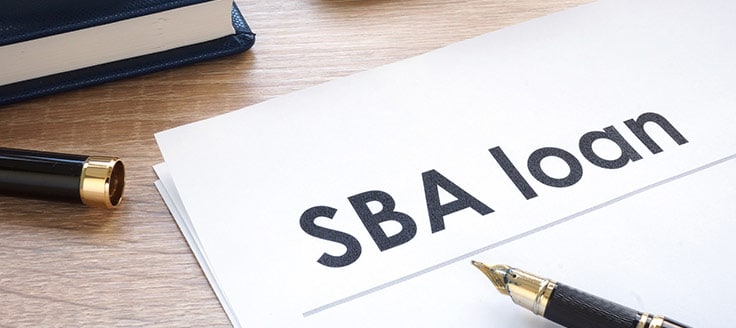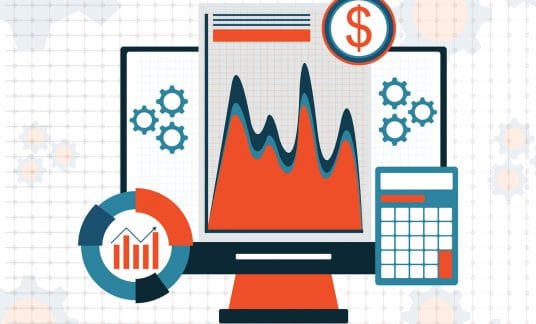Every time a small business applies for an SBA Loan, the Small Business Administration and its lending partners do a deep dive into the income, assets, liabilities and financial health of the business and the folks behind it. One document is essential to this vetting process: SBA Form 413. Also referred to as the personal financial statement, SBA Form 413 is an extensive, and sometimes confusing, inquiry into your personal and business finances that the SBA requires for many of its funding programs. Here’s everything you need to know to make sure you get the form right.
What Is SBA Form 413?
SBA Form 413 is the document used as one of the sources of data by the Small Business Administration to analyze the repayment ability and creditworthiness of a business owner for SBA loans 7(a) and 504.
The SBA uses Form 413 as a way to assess your creditworthiness and ability to repay an SBA 7(a) or SBA 504 loan. Thanks to a partial government guarantee, SBA Loans offer lower interest rates and longer payment terms, making them one of the most sought after types of financing on the market. Due to their popularity, the SBA receives more loan applications than they can fulfill every year, meaning only the best applicants receive loan offers.
Thanks to the SBA guarantee, lenders assume less risk, meaning SBA loans provide more favorable terms to small business owners, including lower interest rates and longer repayment schedules. To protect their own interests, the SBA defines strict application criteria to qualify for their programs. SBA Form 413 assists the Small Business Administration and their lending partners recover any assets in case of default.
Let’s take a quick look at the two programs SBA Form 413 covers:
SBA 7(a): This program allows companies to expand an existing business or purchase commercial property or assets through private-lender loans with some of the best small business loan rates. SBA 7(a) loans have terms ranging from 5 to 25 years with guarantees up to $5 million.
SBA 504: This type of SBA loan is available to eligible businesses that occupy at least 51% of the underlying commercial property. SBA 504 loans divide loan contributions through a nonprofit Certified Development Company (40%), the lender (50%) and you, the applicant (the remaining 10% of the property value). SBA 504 loans have terms between 10 to 20-years with guarantees up to $5 million.
If you’re applying for an SBA 7(a) loan, return the completed form to the lender processing the application for the SBA guaranty. For an SBA 504 loan, return your completed form to the Certified Development Company (CDC) processing the application for SBA guaranty.
A CDC is a nonprofit corporation that uses SBA 504 loans to promote economic development within their communities. To accomplish their development goals, these CDCs work directly with the Small Business Administration, who is also charged with regulating and certifying these nonprofits.

Who Needs to Fill Out SBA Form 413?
Depending on the structure of your business organization, the following members of your organization need to fill out SBA Form 413:
- Each Proprietor
- General Partner
- LLC Managing Member
- Each Owner*
- Loan Guarantors**
*An “owner” is anyone with 20% or more of the equity of the applicant, including spouses and minors.
**Anyone who is providing a guarantee on the loan.
To complete the SBA personal financial statement, you’ll need:
- Annual salary shown on a recent pay stub
- Balances of checking and savings account statements
- Balances of their 401(k), IRA and/or any other retirement account statement
- Cash surrender value of any life insurance documents
- Statements from your mortgage, student loans, car loans and credit cards along with their current balance, account number and payment amount
- Statements from your disability income, real estate income, pensions and any other sources of income
It should also be noted that the spouse’s of these applicants must sign off on Form 413 as well.
12 Steps to Complete a Personal Financial Statement
Once you’ve gathered all of your documents and financial statements, you’re ready to begin completing the form. We’ll start at the beginning of the document and work our way down, section by section.
1. Assets
This section provides an overview of your assets. Though it appears above Section 1, this portion should be filled in after you’ve completed the rest of SBA Form 413. While the following sections will offer defined categories for these valuables, this provides a quick view list for the SBA and your lender.
Be sure your bank statements align with the amounts provided in the personal financial statement, and that all assets are rounded to the nearest dollar.
Total Cash (On Hand and In Banks): This is a summary of all the liquid cash you and your spouse have at your disposal with banks or other financial institutions.
Savings Accounts: Any cash you have in savings, certificates of deposit (CD) or money market accounts should be listed here.
IRA or Other Retirement Accounts: Provide the total of any Traditional IRA, Roth IRA, 401(k) or other retirement accounts. The value of retirement accounts you never rolled over from previous employers should also be included. These accounts will also be listed in the Other Personal Property and Assets section of the form.
Accounts and Notes Receivable: This will reflect the sum of your accounts receivable and notes receivable found in the Other Personal Property and Assets section. Any money that you have lent to others will also be listed here.
Life Insurance – Cash Surrender Value Only: If you have listed any whole life insurance policies in the Life Insurance Held section, list the full cash surrender value. The SBA does not require other insurance policy types in this form field.
Stocks and Bonds: Write the sum of all securities shown in the Stocks and Bonds section.
Real Estate: Provide the combined market value of all commercial and residential properties listed in the Real Estate Owned section.
Automobiles: Provide the combined present market value of cars, recreational vehicles and boats listed in the Other Personal Property and Assets section.
Other Personal Property: Provide the total value of any other additional property listed in the Other Personal Property and Assets section.
Total Assets: Add the value of each asset line item listed above.
Liabilities: Like the Assets overview, this section is a summary of your total liabilities. Complete this once you’ve entered your liabilities in the appropriate sections of SBA Form 413.
Be sure your bank statements align with the amounts provided in the personal financial statement, and that all assets are rounded to the nearest dollar.
Accounts Payable: The total amount of debt held on credit or regular payment basis for products and services. This field is not representative of purchases made with personal lines of credit or credit cards, and it’s not uncommon to have nothing to report here.
Notes Payable to Banks and Others: Provide the current balance of all loans listed in the Notes Payable to Banks and Others section.
Installment Account for Automobiles: List all loans and leases for your cars, boats, planes and/or any other form of transportation. Provide only the combined outstanding balance and monthly payments for multiple vehicle loans or loans.
Installment Accounts for Other: List all student or personal loans, made in installments, payable for one year or more, and provide the combined outstanding balance and monthly payments.
Loans Against Life Insurance: Complete the form field with the total amount outstanding if you’ve taken a loan against your whole life insurance policy.
Mortgages on Real Estate: Indicate the full amount currently owed on your real estate mortgages as listed in the Real Estate Owned section.
Unpaid Taxes: The total of your unpaid taxes listed in the Unpaid Taxes section.
Other Liabilities: The sum total of other liabilities listed in the Other Liabilities section 7. This form field should not include your Contingent Liabilities or any other liabilities already listed under Liabilities.
Total Liabilities: Add the value of each liability line item listed above.
Net Worth: Calculate your net worth by subtracting your liabilities from your assets.
Total Liabilities and Net Worth: The sum of your total liabilities added to your net worth. This number should align with the figure listed in the Assets section.
2. Contingent Liabilities
Contingent liabilities are debts that you may be responsible for but are not fully defined or guaranteed. For SBA Form 413, there are the 4 you need to account for.
Endorser or Co-Maker: The balance of any loans you or your spouse co-signed.
Legal Claims & Judgments: Payments you or your spouse may have been ordered to make by a court order or other legal finding
Provision for Federal Income Tax: These are funds you or your spouse set aside to satisfy your federal income taxes. Usually deducted from your paycheck, this amount can be found on your pay stubs.
Other Special Debt: These are other various, undefined debts.
3. Sources of Income
In Section 1 of SBA Form 413, you’ll be disclosing all of the ways you receive a regular income. This includes but is not limited to the following:
Salaries: This portion should only report the amount reflected on your W-2 and 1099 tax forms for both you and your spouse. Do not include any income you take out of the company through distributions, guaranteed payments or withdraws if your company is an LLC or partnership (include these as “Other Income” under Section 1).
Net Investment Income: Any income that has been generated via dividends, interest on stocks and bonds, recurring capital gains or losses from the sale of investments and/or savings accounts.
Real Estate Income: If you have rental properties, list your net operating income (NOI) after expenses.
Other Income: This text box is reserved for any other income you receive on a regular schedule, such as pensions, child support, and other dividends, distributions or guaranteed payments you receive from the company on a routine basis.
4. Notes Payable to Banks and Others
This portion of Form 413 itemizes all of your debts. This includes personal loans, credit cards and installment loans. If your debts extend beyond the space provided by Form 413, you may include them on supplemental pages. Be sure all supplementary pages have up-to-date statements, reflect the same date as your SBA personal financial statement, and are signed by you and your spouse.
Name and Address of Noteholders: Provide the names and addresses of the institutions that possess your debt. As space is limited, you may use the last 4 digits of any account numbers so they can be paired with your credit report. Abbreviations are permitted
Original Balance: For each account, write the full amount borrowed at inception. (Note: Credit cards begin at $0.)
Current Balance: The amount owed as of the date of your personal financial statement SBA filing. For credit cards paid in full, write $0.
Payment Amount: The minimum amount you are required to pay for each installment. Credit cards can be reported as “varies.”
Frequency: Each account’s payment schedule (daily, weekly or monthly).
Type of Collateral: List any assets used to secure your loans. For unsecured accounts, like credit cards, write “unsecured.”
5. Stocks and Bonds
Here you will acknowledge any marketable securities (common stock, government bonds or certificates of deposit that can quickly be converted to cash) owned by you or your spouse. Supplement pages are permitted if you need more space.
Number of Shares: The overall number of shares you own
Name of Security: Name of the stock or bond
Cost: Original purchase cost of the security
Market Value Quotation/Exchange: The security’s value as of your personal financial statement submission date.
Date of Quotation/Exchange: The date used for the value of the Market Value Quotation.
Total Value: Determined by multiplying the market value or each security by the number of shares owned. This amount will correlate with your entries for “Assets” and “Stocks and Bonds.”
Get Your Business Loan Options In Minutes
6. Owned Real Estate
In this section, you’ll share information about real estate in your name. Property A, if you own it, should be your primary residence while Properties B, C, etc. represent any other owned real estate. Add supplement pages as necessary to include all holdings.
Type of Property: Indicate how each property is used: “primary residence.” “investment property” or “seasonal rental.”
Address: The address for each property (For investment properties, be sure to use the address listed on your personal tax return. This simplifies the SBA’s comparison process, helping to expedite your application.)
Date of Purchase: The date shown on your mortgage bill of sale
Original Cost: The property’s purchase price
Present Market Value: Provide an appraisal estimate for the current value of the property as if the property were on the market today. You can get an appraisal by using online tools like Realtor.com or Zillow.com, or through a broker.
Name and Address of Mortgage Holder: Include the name and address of each bank that holds your mortgages. If you have multiple mortgages with one bank, provide only the last 4 digits of the account number.
Amount of Payment per Month/Year: Provide your monthly or yearly mortgage payment. If your mortgage is paid off, write N/A.
Status of Mortgage: Provide the current status of your mortgage by writing “current,” “paid in full,” or “foreclosed.”
7. Other Personal Property and Assets
This section informs the SBA of any personal property of significant value. Personal property is defined as non-real estate assets that are not affixed to one location, including, but not limited to:
- IRAs and/or other retirement accounts
- Jewelry
- Furniture
- Owned cars
- Recreational vehicles
- Boats
- Collectibles
Provide the make, model and year for vehicles and boats, as well as an estimate of their current value using Kelley Blue Book. If any of the property has been used as collateral, include the name and address of the lien holder along with the amount and payment terms.
8. Unpaid Taxes
All outstanding and unpaid debts, whether federal, state or local, must be properly documented, disclosed and identified as either current or delinquent.
Before the SBA makes any loan offer, you need to be current on all of your taxes. Only delinquent federal taxes with IRS-approved payment plans are immune from this requirement.
The SBA does not permit proceeds from their loans to be used for past due taxes. Before applying, pay back as many tax debts as you can. If you need help to pay off business debts, Fast Capital 360 can assist you in finding the best financing options.
9. Other Liabilities
This section of the SBA personal financial statement covers any remaining liabilities that may not fit into a specific category. We recommend you triple check all of your documents to be sure you are not missing any liabilities. Omitting liabilities, even as an honest mistake, could appear as though you’re trying to hide something from lenders. If you’re unsure of where a specific liability should reside on the form, include it in this section as a safeguard.
Here are some of the liabilities that fall into this catchall:
Co-Signed or Guaranteed Obligations: If you are listed as a guarantor or have co-signed on another person’s loan, this needs to be disclosed to the SBA and your lender. This should ultimately be declared on the form as a contingent liability, since you may be required to pay these debts personally if the primary party on the loan defaults.
Debts to Foreign Governments: Taxes owed to foreign governments should be listed in the Other Liabilities form field. Since these taxes are outside of the accountability of the United States, they fall into this broader category.
Debts Stemming from Private Agreements: Whether there is documentation or not, if you have made an agreement to pay someone, that arrangement needs to be listed.
Outstanding Lawsuits: If you’ve been sued but have not yet received a decision, the lawsuit should be filed as a potential liability. You do not need to record potential lawsuits in SBA Form 413 unless you’re sure you will be held liable in the future. For these cases, report them as a contingent liability.
10. Life Insurance Held
Any life insurance listed as an asset, including whole term life and variable life insurance you or your spouse may be holding, should be listed here. If you pay premiums for someone else, list these as a liability.
The cash surrender value should be included for whole life insurance policies. Each policy should include the death benefit that would be provided to your beneficiaries in the event of your death, as well as the full names of beneficiaries and the holder of your policies.
11. Review
While the Certification precedes the Notice to Loan and Surety Bond Applicants disclaimer on the form, we recommend that you thoroughly review the document before signing.
If you provide false information knowingly or have deliberately left information or documents out of your personal financial statement, you and/or your spouse could face a significant fine and possible jail time.
An honest mistake likely won’t result in jail time. However, your SBA 7(a) or 504 loan application could be passed over if the SBA or your lender finds miscalculations or omissions. We recommend you review the form with a lawyer or certified public accountant to check for any errors.
12. Certification
Before you or your spouse sign, date and add your Social Security numbers to SBA Form 413, read the certification and authorization statements in full.
What Do I Do Once I’ve Completed SBA Form 413?
Once you’ve finished SBA Form 413, you’re ready to submit your personal financial statement.
Your next steps in the SBA loan process will depend on the type of loan you’re applying for and who is handling your application:
- SBA 7(a) loan applicants should submit the statement to their lender.
- SBA 504 loan applicants should forward the form to the certified development company.
- Surety bond applicants should send their form to the surety company or agent
Quickly submitting your application will ensure that your statement dates are as close to the last day of the previous month as possible.
After learning where your SBA Form 413 needs to be sent, you’re able to move onto the next step in your SBA application.









